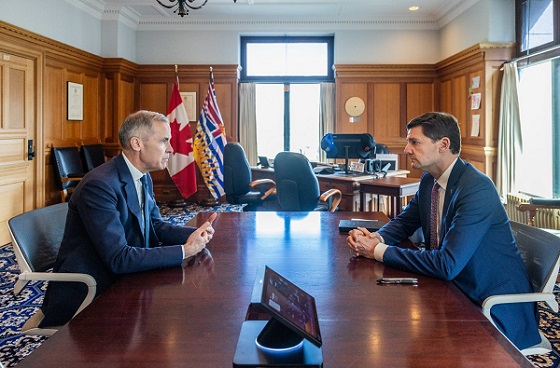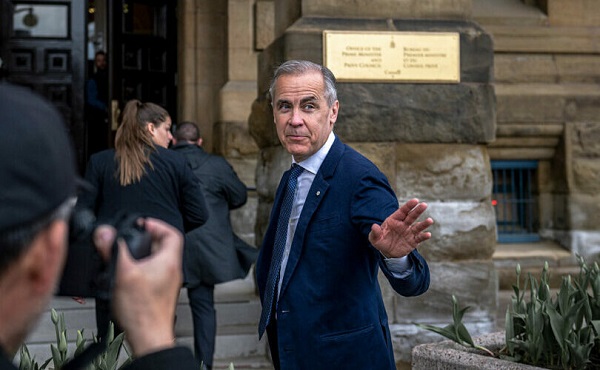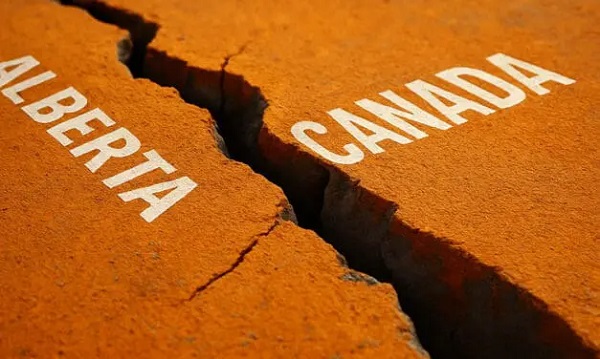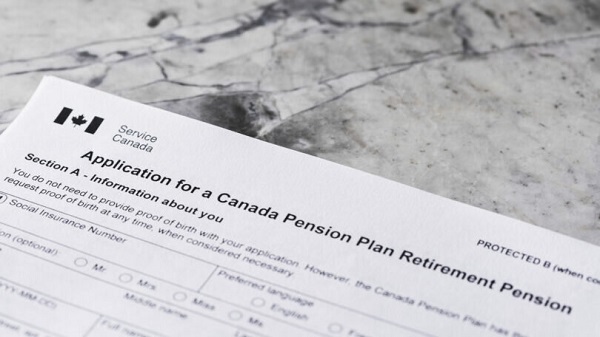Energy
The environmental case for Canadian LNG

From Resource Works
Canada’s new prime minister has made some encouraging pronouncements recently about making Canada an energy superpower – a pledge repeated by King Charles in Tuesday’s throne speech.
Canada’s new prime minister has made some encouraging pronouncements recently about making Canada an energy superpower — a pledge repeated by King Charles in Tuesday’s throne speech.
Mark Carney, through the King, made the clarion call to make Canada “the world’s leading energy superpower in both clean and conventional energy.”
But how can Canada increase oil and gas production and exports while adhering to its green ambitions of net zero by 2050?
Two reports out last week — one from the Fraser Institute, the other from the Pembina Institute — help make a case for the net environmental benefits of a Canadian LNG export industry.
The Fraser Institute’s Exporting Canadian LNG to the World cites three B.C.-specific GHG life cycle models of coal-to-gas switching to conclude that, if LNG exports from B.C. replaced coal power in China, greenhouse gas emissions there could be reduced 34% to 62%.
If Canada were to double its current natural gas production and export it to Asia, “global GHG emissions could be reduced by up to 630 million tonnes annually,” the report asserts.
Canada’s total GHG emissions in 2023 was 694 million tonnes, according to Environment Canada. So, according to the Fraser Institute’s math, the equivalent of Canada’s total GHG emissions could be almost entirely erased, simply by exporting LNG to China to displace coal.
There’s a couple of flies in this ointment, which I’ll get to shortly, but the argument that there would be net environmental benefits to Canadian LNG exports still holds up, I think.
Coal accounts for about 45% of global emissions from fuel combustion, according to the International Energy Agency (IEA).
Switching from coal to natural gas in thermal power generation can result in a 50% reduction in CO2 emissions, according to the Intergovernmental Panel on Climate Change (IPCC).
But natural gas isn’t just a cleaner fuel, it’s also a critical feed stock — for which there is no real substitute — for an array of industrial and petrochemical processes, including fertilizer production. Like it or not, there will be a demand for natural gas for decades to come, and Canada is demonstrating that it can produce it with much lower emissions intensity than almost anyone else.
That natural gas can reduce emissions when it displaces coal is not theoretical — there’s proof. In the U.S., a 32% decrease in CO2 emissions between 2005 and 2019 in the power sector was attributed largely to coal-to-gas fuel switching, according to the Energy Information Administration (EIA).
“Lower CO2 emissions have largely been a result of a shift from coal to natural gas in the electricity generation mix,” the EIA concludes.
Now for the flies in the ointment.
First, while there could indeed be sizable global emissions reductions if Canadian LNG displaced coal power in China, India and other parts of Asia, we couldn’t claim those reductions under the current Paris Agreement model.
(Nota bene: Donald Trump is once again withdrawing the U.S. from the Paris Agreement, and the U.S. — now the world’s biggest LNG exporter — has no compunction over gobbling up as much LNG market share as it can.)

Canada and China are both signatories to the Paris Agreement. Each country produces its own climate action plans — nationally determined contributions — and can only count emissions reductions within its own national borders.
We can’t claim Chinese emissions reductions for our own, even if it were the result of Canadian LNG imports.
There has been talk of Internationally Transferred Mitigation Outcomes (ITMOs) that would allow Canada to be credited for emissions reduced in China from coal displacement through LNG. I don’t know why China, having achieved emissions reductions through coal-to-gas fuel switching, would surrender those reductions to Canada.
Achieving some win-win ITMO agreement would take some fancy bargaining, and perhaps Mark Carney is up to this task. He knows a thing or two about these sorts of things, having served as the UN’s special envoy on climate action and finance.
But even if ITMOs are not possible for Canadian LNG exports, there are still compelling economic and environmental arguments for Canada to act on its strengths — abundant resources, high demand for those resources, and comparatively high environmental standards.
Anti-fossil fuel activists will, of course, continue to trot out the canard that LNG is as bad, if not worse, than coal, because of the methane associated with upstream natural gas production.
It’s true that methane is the Achilles heel of natural gas and LNG. Because of its high global warming potential, even small amounts of methane — leakage rates of 2% or more — can begin to negate natural gas’s lower CO2 intensity.
Fortunately, methane leakage can be addressed through better plumbing, best practices, regulations, and better monitoring, and as the Pembina Institute points out, B.C.’s natural gas sector has leading the way here.
According to the BC Energy Regulator, measurements completed in 2021 estimate the methane intensity of B.C. natural gas production at just 0.38% to 0.48%, which is well below the 1.1% to 1.8% ceiling set for methane intensity in oil and gas production.
The result of this work on methane abatement is that B.C. has met its methane reduction targets for oil and gas two years ahead of schedule, according to the Pembina Institute.
Between 2014 and 2023, B.C. natural gas production grew 67 per cent, while methane emissions from oil and gas production fell by 51 per cent, the Pembina Institute notes in its report, Raising the Bar.
“B.C.’s success offers yet more evidence that methane emissions can be tackled without impeding the oil and gas industry’s operations,” Amanda Bryant, senior analyst for Pembina Institute, says in a press release accompanying the report.
“If anything, given the number of countries now considering new import standards that will privilege low-emissions energy products, stringent methane regulations – backed by transparent, best-in-class measurement data – are going to be key in bolstering the global competitiveness of our oil and gas sector.”
It must be added that, in addition to lower methane intensities, natural gas and LNG produced in B.C. also has lower CO2 intensities, thanks to electrification of the upstream and of some of the planned LNG plants. China, India, Japan, South Korea and other Asia Pacific nations will continue to buy natural gas and LNG from someone for years to come.
Shouldn’t that someone be Canada?
Economy
Canada Treats Energy As A Liability. The World Sees It As Power

From the Frontier Institute for Public Policy
Research VP Marco Navarro-Genie warns that Canada’s future hinges on building energy infrastructure, not just expanding pipelines but forging a true North American energy alliance. With global demand rising and authoritarian regimes weaponizing energy, Ottawa’s dithering costs Canada $70 million daily. Sovereignty isn’t secured by speeches but by infrastructure. Until Canada sheds its regulatory paralysis, it will remain a discount supplier in a high stakes geopolitical game. Time to build.
Canada has energy the world is begging for, but ideology and red tape are holding us back
As Prime Minister Mark Carney met with U.S. President Donald Trump recently, energy should have been the issue behind every headline, whether mentioned or not. Canada’s future as a sovereign, economically resilient country will depend in no small part on whether the country seizes this moment or stalls out again in a fog of regulatory inertia and political ambivalence. Canada holds an underleveraged strategic card: the potential to be the world’s most reliable democratic energy supplier. Recent trade figures show Chinese imports of Canadian crude hit a record 7.3 million barrels in March, a direct result of newly expanded access to the Pacific via the Trans Mountain Expansion (TMX), a federally owned pipeline project that now connects Alberta crude to global markets through British Columbia’s coast. But one pipeline does not make a national strategy. Demand in Asia is growing fast. India is among the hungriest, but Canada’s infrastructure is nowhere near meeting that demand.
This matters not just for Canada, but for the United States as well. In a world where energy markets are weaponized and strategic reserves manipulated by authoritarian regimes, the case for a coordinated North American energy alliance is stronger than ever. Such an alliance should not erode national sovereignty. It should reinforce it, allowing Canada, the U.S. and Mexico to insulate themselves collectively from supply shocks and geopolitical blackmail while projecting democratic strength abroad.
But for that alliance to work, Canada must be a credible partner, not merely a junior supplier shackled by Ottawa-induced internal bottlenecks. While the U.S. has leveraged its shale revolution, LNG capacity and permitting reforms to pursue energy dominance, Canada dithers. Projects languish. Investment flees. And meanwhile, Canadian oil continues to flow south at a steep discount, only to be refined and resold, often back to us or our trading partners, at full global prices.

Yes, you read that right. Canada’s oil and gas is sold at a discount to U.S. customers, and that discount costs Canada more than $70 million every single day. The Frontier Centre for Public Policy has developed a real-time tracker to monitor these losses. This pricing gap exists because Canada lacks sufficient pipeline infrastructure to access overseas buyers directly, forcing producers to sell to the U.S., often at below-market rates.
Such massive losses should be unacceptable to any government serious about economic growth, geopolitical influence or environmental integrity. Yet Ottawa continues to speak the language of ambition while legislating the mechanics of paralysis. Stephen Guilbault’s statement that Canada already has enough pipelines speaks to more paralysis..
Canada’s energy infrastructure challenges are not just economic; they are matters of national defence. No country can claim to be secure while relying on another’s pipelines to transport its energy across its own territory. No country can afford to leave its wealth-producing regions boxed in by regulatory choke points or political resistance dressed as environmental virtue.
Our energy economy is fragmented. Western hydrocarbons are stuck inland and must pass through the U.S. to reach Eastern Canada or global markets eastward. This weakens national unity and leaves us exposed to foreign leverage. It also creates strategic vulnerabilities for our allies. American industries depend on Canadian crude. So do U.S. Gulf Coast refineries. And while American officials continue to treat energy as a tool of diplomacy and economic leverage, using energy exports to build alliances and reduce reliance on unstable regimes, Canada treats it as a domestic liability.
We need to shift the frame. Infrastructure isn’t just about steel in the ground; it’s the backbone of strategic autonomy. Pipelines, export terminals and utility corridors would allow Canada to claim its place in the emerging geopolitical order. They would also signal to global investors that Canada is open for business and capable of delivering returns without political obstruction.
The U.S. wants a stable, competent partner to help meet global energy needs. Increasingly, so does the rest of the world. But until we address our internal dysfunction and build, we’re stuck. Stuck watching global opportunities pass us by. Stuck selling low while others sell high. Stuck in a conversation about sovereignty we’re not structurally equipped to address, let alone win.
When Carney meets with Trump again, he would do well to remember that economic independence, not rhetorical unity, is the bedrock of sovereignty. Without infrastructure, Canada brings only words to a hard-power conversation.
Paraphrasing Thomas Hobbes, energy covenants without infrastructure are but words. It’s time to stop posturing and start building.
Marco Navarro-Genie is the vice-president of research at the Frontier Centre for Public Policy. He is co-author, with Barry Cooper, of Canada’s COVID: The Story of a Pandemic Moral Panic (2023).
Business
The Liberals Finally Show Up to Work in 2025

From the National Citizens Coalition
Canadians Demand Action, Not More Empty Promises
The National Citizens Coalition (NCC) today calls out the Liberal government for their belated return to the House of Commons in 2025, after months of dodging accountability while Canadians grapple with skyrocketing costs, unaffordable housing, crime and chaos, and the fallout of a decade of failed Liberal policies.
While the Liberals dust off their seats, millions of Canadians have been struggling to pay for groceries, keep a roof over their heads, or envision a future where hard work still pays off. The NCC demands the government stop hiding behind empty rhetoric and deliver meaningful, common-sense actions to address the crises they’ve exacerbated.
“After years of empty gestures, empty rhetoric, and empty promises, showing up to Parliament in 2025 isn’t an achievement – it’s the bare minimum. Canadians are drowning in high taxes, inflation, and a housing crisis, and they deserve real solutions, not more speeches,” says NCC Director Alexander Brown.
The NCC calls on the Liberal government to immediately prioritize:
Immediate tax relief to put money back in the pockets of hardworking Canadians, including axing the HIDDEN CARBON TAX on our Great Canadian businesses.
Concrete steps to slash immigration back to responsible, sustainable norms; including a crackdown on fraudulent ‘diploma mills,’ and the abolishment of the ‘Temporary Foreign Worker’ program, to protect Canadian jobs, and the jobs of our youth.
Meaningful, immediate efforts to increase housing supply, by slashing red tape and bureaucratic roadblocks that drive up development costs.
An end to wasteful spending on pet projects and corporate handouts that do nothing for struggling families.
Steps toward meaningful criminal justice reform; including an end to Liberal catch-and-release bail for repeat violent offenders.
A plan to restore economic opportunity, so young Canadians can afford homes and build a future without fleeing the country.
And it’s time to Kill Bill C-69 — and Build Pipelines.
Working Canadians have heard enough platitudes – it’s time for results. The government must act decisively to fix the mess they’ve created or step aside for those who will. With just a few short weeks before the Liberals abscond for another vacation, IMMEDIATE ACTION is required to match the urgency of the moment, and to atone for the insult of the Liberals’ cynical, dishonest, “elbows up” campaign that left millions of young, working-age Canadians without hope for the future.
About the National Citizens Coalition:
Founded in 1967, the National Citizens Coalition is a non-profit organization dedicated to advocating for lower taxes, less government waste, and greater individual freedom. We stand for common-sense policies that once again put Canadians first.
-

 Addictions1 day ago
Addictions1 day agoMan jailed for trafficking diverted safer supply drugs, sparking fresh debate over B.C. drug policies
-

 Alberta2 days ago
Alberta2 days agoHow Trump and Alberta might just save Canada
-

 Business1 day ago
Business1 day agoThe Liberals Finally Show Up to Work in 2025
-

 Alberta1 day ago
Alberta1 day agoJann Arden’s Rant Will Only Fuel Alberta’s Separation Fire
-

 Banks1 day ago
Banks1 day agoCanada Pension Plan becomes latest institution to drop carbon ‘net zero’ target
-

 Bruce Dowbiggin1 day ago
Bruce Dowbiggin1 day agoCaitlin Clark Has Been The Real Deal. So Her WNBA Rivals Hate Her
-

 Daily Caller1 day ago
Daily Caller1 day agoThere’s A Catch To California’s Rosy Population Stats
-

 espionage2 days ago
espionage2 days agoIntel official accused of leaking classified info to foreign country to sabotage Trump

